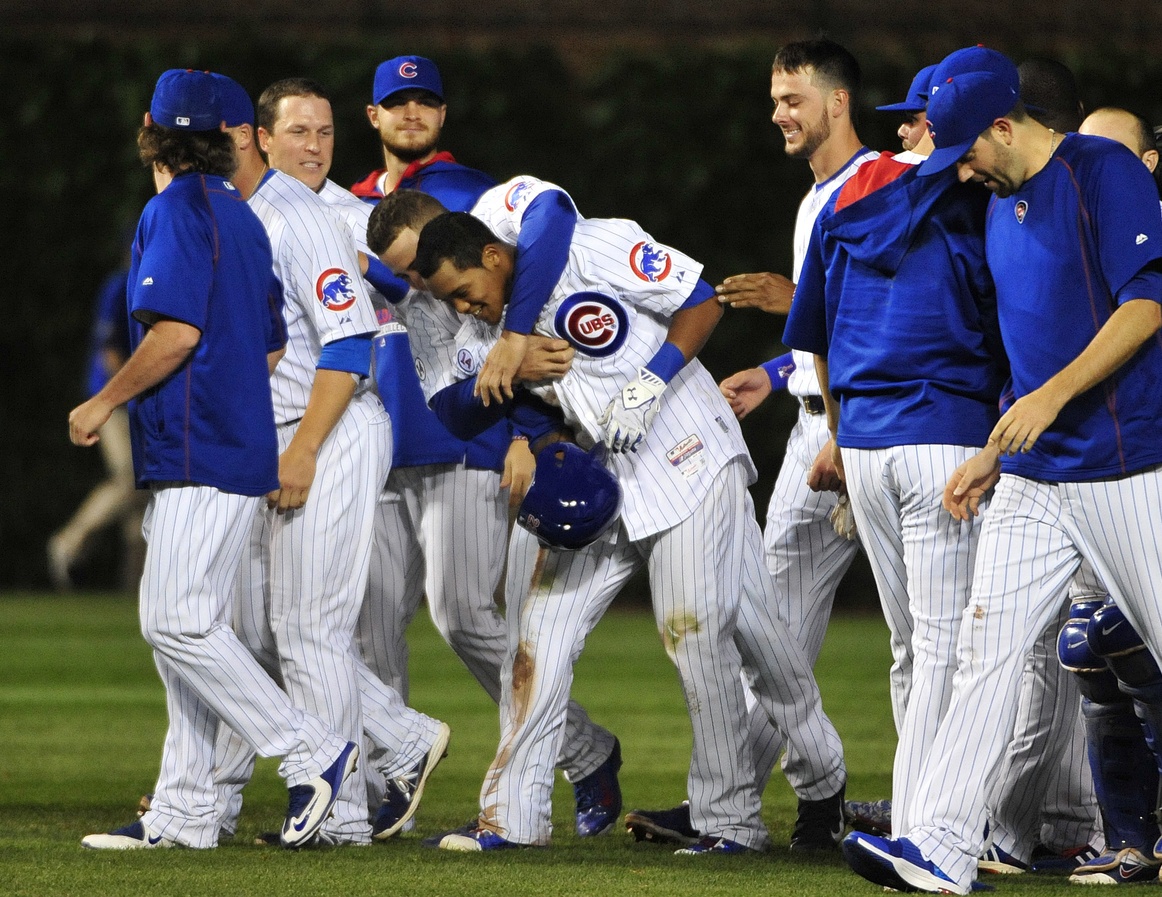Photo courtesy of David Banks-USA TODAY Sports
Looking at winning records in a vacuum can be perilous. Win the first game of a series, lose the first and last games of the previous three game set, and lose just the last game of the series before that, and suddenly, all of the following are true:
(1) The team has lost three of their last five ![]()
(2) The team has won two of their last three ![]()
(3) The team has lost three of their last six ![]()
(4) The team has won four of their last seven ![]()
Point is, with a small enough sample size, you can construct the narratives however you would like. Call it Morgan’s Law, if you will. I’m here to argue against it, and to update my post on this site from a few weeks ago, wherein I argued that, despite comparisons to the 2008 division-championship club, the more appropriate analogue for this year’s team might be the 2007 squad:
That year’s team, while ending the year in the same place—division champions, and three and out in the postseason—put up a much more attainable 85-77 record than their successors a year later. More to the point, and again much like this year’s club, the team hovered around the .500 mark for much of April and May before kicking into high gear in the early part of June on the way to the division title.
I also, fairly inexcusably, defended this position by means of a chart which displayed each team’s record on different dates in their respective seasons. The obvious problem with that is that the season started at different times in each year I considered, and moreover had off days at entirely different times, meaning that (for example) on April 10 of 2008, the Cubs had played nine games and won six of them, while the 2015 squad had played only three games (winning one) by that date. Just goes to show that it’s hard to follow your own advice.
In order to (partially) atone for my sins, here’s an updated chart, this time organized by games played:
| 2007 | 2008 | 2015 | |
| 1 GP | 0 – 1 | 0 – 1 | 0 – 1 |
| 10 GP | 4 – 6 | 6 – 4 | 6 – 4 |
| 20 GP | 7 – 13 | 14 – 6 | 12 – 8 |
| 30 GP | 15 – 15 | 18 – 12 | 15 – 15 |
| 45 GP | 21 – 24 | 28 – 17 | 25 – 20 |
Well, that’s better, isn’t it? That makes you feel better after losing two out of three to the Nationals, doesn’t it? This year’s Cubs aren’t their predecessors from 2008, who were already in first place by this point in the schedule, but they aren’t their 2007 selves either. Those guys, by the way, ended up winning the division. It’s happened before, and it can happen again.
And maybe it will. If you take a look at BP’s adjusted standings, you’ll see that the Cardinals—those pesky, pesky, division-leading Cardinals—are among the leaders in overperformance, as measured by the difference between their actual winning percentages and their second- and third-order winning percentages. I’ll spare you the #gorymath here, but the purpose of these standings is to strip out sequencing, strip out luck, adjust for strength of schedule, and get a sense of how many runs (and, consequently, wins) a team ‘should’ have racked up by this point in the season. By this measure, at least, the Cardinals have won more games—about three more—than they ‘should’ have. Stripping out those wins would put them in a dogfight with the Cubs for the division rather than with the solid four-to-five game lead they’ve enjoyed for the past few weeks.
But ‘should’ is a tricky word. Over the past decade, the Cardinals have made their money and their reputation by consistently overperforming the projections, winning more games than it seems reasonable that they should. That suggests that they’ve worked something out that the projections aren’t catching, and that the Cubs perhaps shouldn’t expect to catch them quite so easily. As my colleague Brett Taylor says, they have some #VoodooMagic going for them. And the Cubs, by the way, are actually pegged as overperforming their win total as well, albeit by a smaller margin than the Cardinals. So perhaps the rational view of this season is that the Cubs have been, on the whole, a little bit above average as a team, and the Cardinals are actually a very good team. This view would lead you to conclude that aspiring for a Wild Card spot is reasonable for the Cubs this year.
Still, it’s hard to watch the Cubs and not feel that they’re underperforming to some degree. Besides a few key players—Jake Arrieta, Anthony Rizzo, Kris Bryant, Miguel Montero, Jon Lester, and Dexter Fowler come to mind—the depth players and pieces aren’t really playing up their potential. The bullpen has been flat-out bad at times. And everyone is still very, very young. It isn’t hard to imagine scenarios in which this team—which has hovered around .550 for much of the season—goes on a terrific run and shooting up the standings. Until then, however, it’s important to avoid reading too much into day-to-day swings in the standings and focus on the big picture, which is that, for the first time in years, the Cubs aren’t bad. How not bad they are is a matter for the future to reveal.
